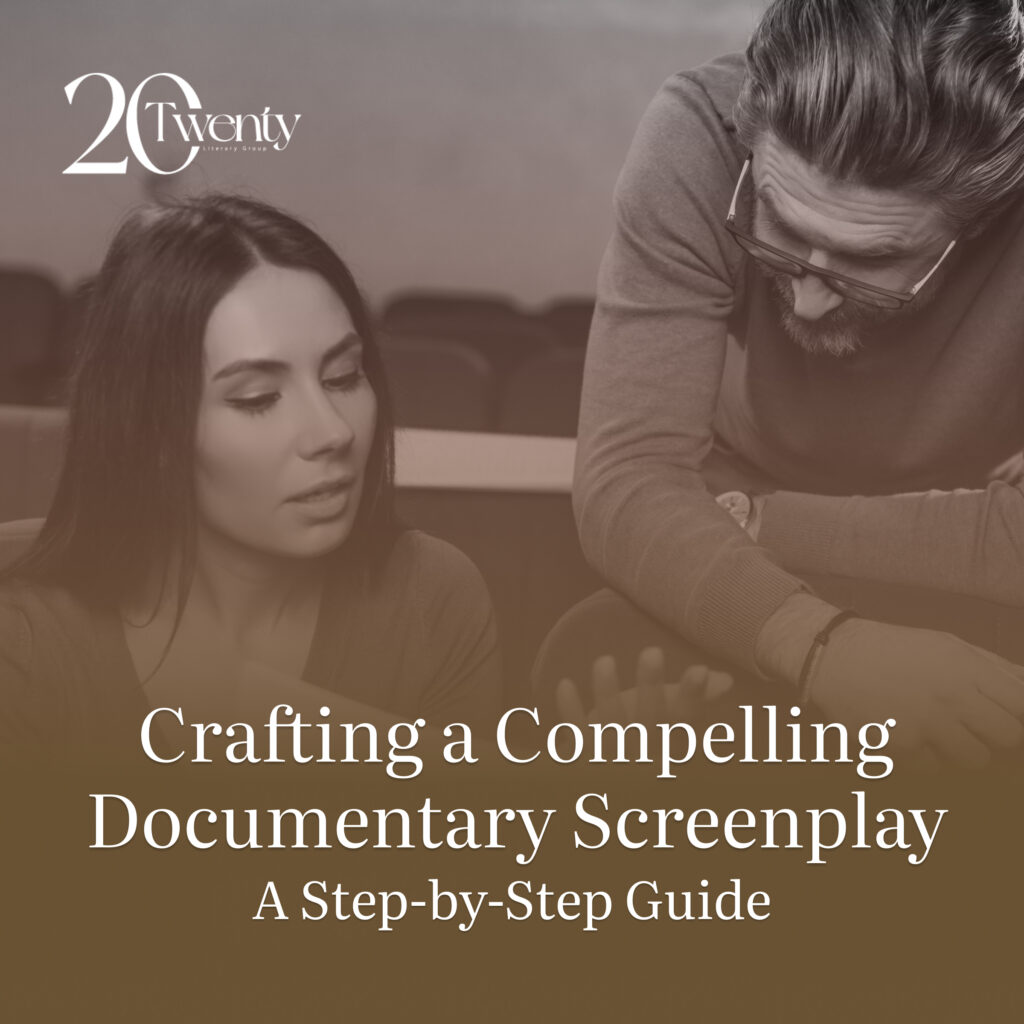Documentary filmmaking is a powerful tool for storytelling that can inspire, educate, and entertain audiences. However, the key to crafting a successful documentary lies in its screenplay. To create a cohesive and engaging story, a compelling documentary screenplay must weave together various elements, including interviews, archival footage, and narration. But how do you go about creating such a screenplay?
In this step-by-step guide, we’ll explore the art of crafting a compelling documentary screenplay. From researching your subject matter to structuring your story and polishing your final draft, we’ll cover everything you need to know to create a documentary that resonates with your audience. So whether you’re a seasoned filmmaker or just starting, buckle up and get ready to dive into the world of documentary screenwriting.
Research and pre-production for documentary screenplays
The first step in creating a documentary screenplay is research. It is important to deeply understand the subject matter, the people involved, and the story you want to tell. This involves conducting interviews, reading books, articles, and other materials related to the subject matter.
Once you have gathered all the necessary information, it’s time to start planning your documentary. This involves creating a production schedule, identifying locations, and scouting for talent. You need to decide on the type of documentary you want to create, whether it is a character-driven, issue-driven, or observational documentary.
During pre-production, you also need to consider your budget and funding options. You can apply for grants, reach out to investors, or create a crowdfunding campaign to raise funds for your documentary.
Developing a compelling narrative for your documentary
A good documentary needs a compelling narrative that engages the audience and keeps them interested throughout the film. Your narrative should be structured around a central theme or issue you want to explore. This theme should be communicated clearly and concisely.
You also need to consider the tone of your documentary. It can be serious, humorous, or a mix of both. Your chosen tone will depend on the subject matter and your target audience.
To develop a compelling narrative, you need to identify your documentary’s main characters or subjects. These characters should be interesting, relatable, and have a unique story. You must also consider the supporting cast, who will provide additional insight into the subject matter.
Outlining your documentary screenplay
Once you have developed your narrative, it’s time to start writing your screenplay. The first step is to create an outline of your documentary. This outline should include the main story beats, the characters involved, and any significant events or plot twists.
Your outline should also include the themes and messages you want to communicate through your documentary. This will help you stay focused on your narrative and ensure your story is coherent and engaging.
Writing the first draft of your documentary screenplay
With your outline, it’s time to start writing your first draft. The first draft is all about getting your ideas down on paper. You should aim to write quickly and not worry too much about grammar or structure.
During the writing process, you should create a strong opening that grabs the audience’s attention and sets the tone for the rest of the documentary. You should also aim to create a strong ending that leaves a lasting impression on the audience.
Crafting engaging dialogue and interviews
Dialogue and interviews are an essential part of any documentary screenplay. They help to bring the characters and story to life and provide valuable insights into the subject matter.
You must consider the character’s personality, background, and motivations to craft engaging dialogue. You should also consider the tone of the scene and the emotions you want to convey.
When conducting interviews, you must prepare a list of questions to help you elicit the information you need. Your questions should be open-ended, allowing the interviewee to express their thoughts and feelings.
Incorporating visuals and sound into your screenplay
Visuals and sound are essential elements of a documentary. They help to create an immersive experience that engages the audience and brings the story to life.
To incorporate visuals into your screenplay, consider the type of shots you want to use, the lighting, and the framing. You should also consider using archival footage, photographs, and other visual elements to enhance your story.
Sound is equally important. You need to consider the use of music, sound effects, and narration. You should create a soundscape that complements the visuals and enhances the overall experience.
Editing and revising your documentary screenplay
Once you have finished writing your first draft, it’s time to start editing and revising. This involves reviewing your work and making changes to improve the overall quality of your screenplay.
You should focus on improving the pacing, structure, and dialogue during the editing process. You should also consider the use of visuals and sound and how they contribute to the overall experience.
Tips for pitching your documentary screenplay
Pitching your documentary screenplay is an essential part of the filmmaking process. It involves presenting your idea to potential investors, broadcasters, or distributors.
To pitch your documentary, you must create a pitch deck outlining your story, the characters, the themes, and the target audience. You should also include relevant footage or visual material to help you sell your idea.
During the pitching process, being passionate and confident about your project is important. You should also be open to feedback and willing to change your screenplay based on the feedback you receive.
Creating a compelling documentary screenplay is a complex process that requires research, planning, and a deep understanding of the subject matter. Following the step-by-step process outlined in this guide, you can create a documentary that resonates with your audience and inspires them to act. Stay focused on your narrative, be open to feedback, and enjoy the process. With hard work and dedication, you can create an informative and engaging documentary.

